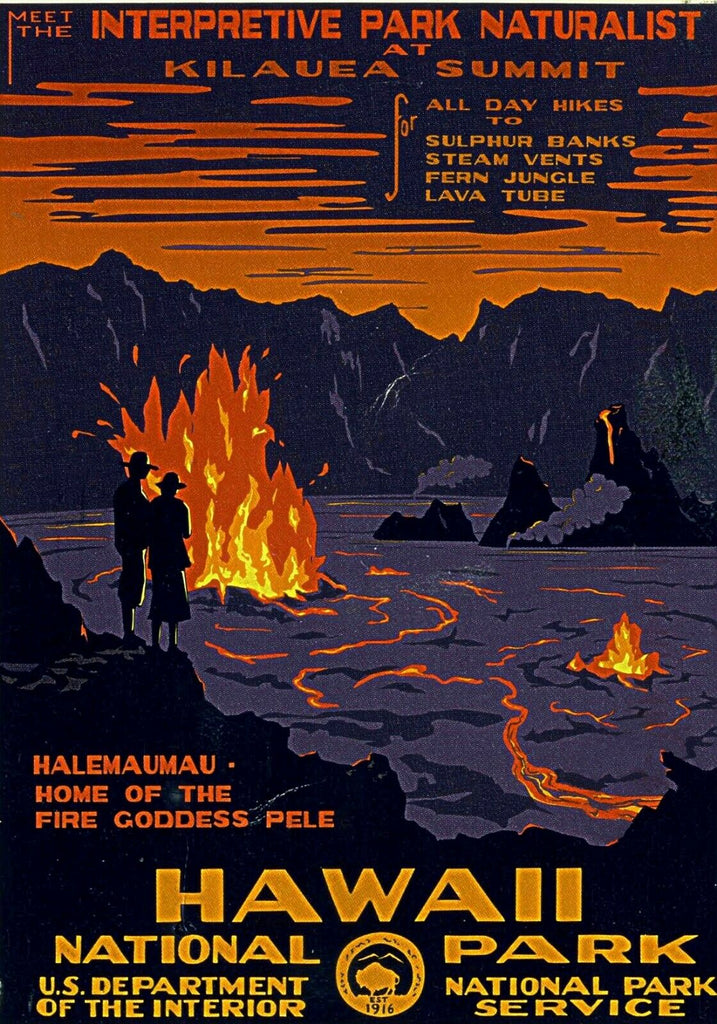The Lost National Parks - Part #2
Since the designation of Yellowstone National Park on March 1st, 1872, National Parks have been an integral part of our nation's conservation, history, wilderness appreciation, exploration, and land protection. At the time of this writing, the United States has 63 National Parks, covering about 52.3 million acres. That's about the size of Kansas, our country's 15th largest state!
One of the things that has always fascinated us about the National Parks is not just their natural beauty, the landmarks, the stunning geography, and the diverse wildlife, but their history. Last week we began a three-part series on the "Lost National Parks," seven National Parks that are no longer with us (at least, not in the sense of their original designation). We began by exploring Mackinac National Park in Michigan, General Grant National Park in California, and Platt National Park in Oklahoma. This week, we move to North Dakota and Hawaii, the birthplaces of two of America's oldest protected lands.
Sullys Hill National Park
In 1904, the United States Congress decided to take a 1,674-acre plot of land in Benson County, North Dakota, and preserve it as a National Park. The park was named after Alfred Sully, a U.S. Army General who earned recognition for massacring hundreds of Indigenous Dakota in the 1860s.
Less than three decades later, in 1931, Congress transferred the park to the U.S. Fish and Wildlife Service, effectively changing its name and designation to Sullys Hill National Game Preserve. The reason for the change was to make the park into a wildlife refuge, where hunting is permitted.
Fast forward almost a century, and the name of the park changed yet again. In 2019, the Indigenous Spirit Lake Tribal Council won a victory for Indigenous tribes everywhere by convincing Congress that the park should not be named after a genocidal army general, especially not when the Spirit Lake Tribe has had hunting and fishing rights on the park for decades.

Quoting the Tribe's letter to Congress:
"The Spirit Lake Dakota people... believe the name chosen, White Horse Hill, comes from historical happenings that are sacred as well as unique to the Dakota people. White Horse Hill (Sunka Wakan Ska Pa Ha) reflects a positive experience to the Dakota People rather than an individual who was destructive to the Dakota people and their culture."
Since December 2019, the park has been officially recognized as White Horse Hill National Game Preserve.
A verdant beauty of mixed-grass prairies, marshes, and wooded hills, the Preserve is home to American bison, elk, white-tailed deer, and a colony of prairie dogs. Visitors to the park can participate in school programs, public workshops, guided nature hikes, bird-watching tours, summer youth programs, and conservation programs.

Interested in learning more about a park that embodies both natural wonder and significant aspects of North Dakota history? Check out the U.S. Fish & Wildlife Service's dedicated webpage to the park, or check out the National Recreation Trail website, which has more information on the park.
Hawaii National Park
In 2016, Hawaii celebrated its 100th anniversary of its first National Park, Hawaii National Park. But today, there is no such thing as "Hawaii National Park." What happened to the park? Did it disappear into the ocean?
Not at all!
On August 1st, 1916, the United States Congress adopted a bill officially establishing a National Park in the Territory of Hawaii. The newly formed Hawaii National Park included the following land areas:
- The Kilauea Section (35,865 acres).
- The Mauna Loa Section (17,920 acres).
- (A strip of land to connect those two sections).
- The Haleakala section on the Island of Maui (21,150 acres).
As the years passed, the federal government acquired additional pieces of property and added them to the National Park. Today, the parklands on just the Big Island alone comprise a stunning 333,000 acres of land!
In 1961, a change occurred which did not drastically change the layout of the National Park, but which did cause "Hawaii National Park" as we knew it to cease to exist. In that year, Haleakala, on Maui, was granted a designation as its own National Park, separate from the other park sections on the Big Island. It was given the name Haleakala National Park, and the Big Island's parklands were renamed as Hawai'i Volcanoes National Park.

Today, Haleakala National Park, on Maui, now has extra protection as an International Biosphere Reserve (1980) and comprises 30,183 acres, of which 24,719 acres are designated wilderness.

And today, Hawai'i Volcanoes National Park, on the Big Island, comprises 335,259 acres, from the summit of Mauna Loa all the way down to the sea. The park is almost the size of the entire island of Oahu!
To learn more about Hawai'i Volcanoes National Park and Haleakala National Park, the National Park Service has information on both Hawai'i Volcanoes and Haleakala.
Exploring the Lost National Parks
The beautiful thing about the Lost National Parks is that, while they no longer technically exist in name, they still exist as designated protected lands. In fact, some, like Mackinac Island State Park, are now even larger than they were when they were National Parks!
If you want to explore the "lost" National Parks discussed in this blog, check out the U.S. Fish & Wildlife Service for more information on White Horse Hill National Game Preserve and the National Park Service for more information on Hawaii National Park and Haleakala National Park.


And if you're interested in picking up some vintage poster art of your favorite National Park, we have an entire art collection with over 300 original designs, all dedicated to the American National Parks.
Next week, we'll conclude our story on the Lost National Parks with an exploration of Mt. McKinley National Park and Lafayette National Park!
Until next time,
-Ren Brabenec
Anderson Design Group Writing Staff
← Older Post Newer Post →

